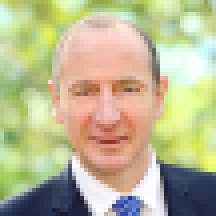Pearson is looking for some magic to support its transition from textbook publisher to digital education company. And for that, what better place to turn to than the Magic Kingdom?
Today, the company announced that Andy Bird, former chairman of Walt Disney International, will be Pearson’s next chief executive, starting October 19. He will succeed John Fallon, who announced in December plans to step down this year.
The search for a replacement included more than 100 internal and outside candidates, according to Sidney Taurel, chair of Pearson’s board of directors. Bird emerged as the leading candidate for “his success in leading a large global company” and “experience with digital disruption and transformation, which we are in the middle of,” says Taurel in an interview.
As the head of Disney’s operations outside the United States, Bird has been credited with expanding its global business, particularly across China and India. In the U.K., he oversaw the launch of Disney Life, the company’s first consumer streaming service that was the predecessor to its eventual replacement, Disney+.

Bird left Disney in 2018 and had been on Pearson’s radar for some time, according to Taurel. Bird was appointed to the company’s board of directors in May 2020 as a non-executive director.
What Bird doesn’t bring to the nest: experience running an education organization. That didn’t concern Taurel. “We did not make this a requirement, because we thought it would be good to have fresh eyes, someone who has led digital efforts from another industry.”
In addition, he adds, “we are the biggest education publisher… and it would be difficult to find someone who has a track record of successfully leading digital transformation at our level.”
That transition fell largely on outgoing CEO Fallon, who took the helm in January 2013. At times, it was turbulent. In its effort to remake itself as a digital-first education company, Pearson divested some of its most well-known newspaper assets, sold off products that were not considered core to its future and laid off thousands of staff.
Those moves were accompanied by a series of profit warnings that stoked the ire of shareholders. In 2016, the company posted a £2.6 billion loss, the biggest in its history. It has recovered since; last year Pearson posted a profit of £581 million on £3.9 billion in sales.
Expect a less chaotic tenure under Bird, says Taurel. “John [Fallon] laid the groundwork for the next stage in our transformation. He has done a good job of making the difficult decisions to rightsizing the organization to fit what we want to be, to reorient the sales team to support our digital offerings.”
For 2018, the company reported that 62 percent of its overall business came from fully digital or digitally enabled services, such as e-books. That figure ticked up, to 66 percent, in 2019.
According to the announcement of Bird’s appointment, he will make an annual base salary of $1.25 million. He will also buy $3.75 million worth of Pearson shares. To earn his keep, there are several big goals he’ll be expected to accomplish.
1. Putting the company back on the path of sustainable growth and profitability.
Among the priorities shared by Taurel is “regaining market share in the U.S. higher education market.” For years, Pearson has reported declining revenues in its North American higher education courseware business, which is trying to move away from print. In the first half of 2020, it reported a 14 percent year-over-year decline in this division, due in part to the shuttering of campuses and bookstores after the pandemic.
Last year, the company unveiled several new digital products, including Revel, its online higher-ed courseware platform, and Aida, a calculus tutoring app.
The pandemic has also “accelerated some growth opportunities” for other digital offerings, says Taurel. Tests taken via Pearson’s online proctoring service, VUE, spiked to 580,000, compared to 66,000 over the first half of 2019. Its K-12 virtual school business, Connections Academy, saw a 61 percent increase in application volume over the same period.
2. Complete the digital transformation while improving operational efficiency.
In the past, Pearson had a reputation for purchasing other assets to expand into new products and services. But not all of those tools played well together. As a result, the company once used as many as 63 different enterprise resource planning systems (a commonly used type of business management software), Taurel shared. That has since been significantly whittled down. A similar purge took place for its customer relationship management systems.
Taurel deferred when asked whether Pearson would return to its acquisitive roots. “That will be something for [Bird] to look at and propose to the board,” he says, adding that “we do have a stronger cash balance sheet.”
3. Take advantage of opportunities in lifelong learning.
“In this age of great digital and economic disruption, our skills are being quickly obsolete,” says Taurel. “We want Pearson to be the destination for people upskilling—and that’s why we need more direct-to-consumer expertise, which Andy [Bird] brings.”
Last year, the publisher launched a venture fund with a focus on “employability, lifelong learning, next-generation assessment, upskilling, skill identification/matching,” according to its website.
“Some people have said that we need a turnaround at Pearson. That’s not how the board and I feel,” says Taurel. “We are several innings into that transformation, and look forward to working with Andy.”


